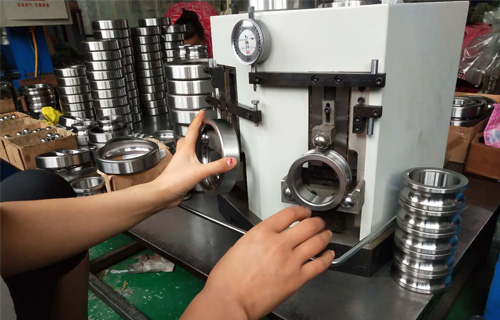
10 月 . 21, 2024 10:44 Back to list
Exploring the Benefits and Applications of Small Angular Contact Bearings in Precision Engineering
Understanding Small Angular Contact Bearings
Small angular contact bearings are a vital component in various machinery and equipment, offering precision and reliability in rotational motion. These bearings are designed to accommodate combined loads, including radial and axial forces, which makes them ideal for applications where both types of loads are present.
Construction and Design
Small angular contact bearings feature an inner and outer ring, along with rolling elements, typically balls. What sets these bearings apart is the geometry of their raceway surfaces. The inner and outer rings are designed at an angle to each other, allowing the bearing to support higher axial loads compared to other types of bearings. This design principle results in a small contact area, which requires careful alignment to minimize wear and maximize performance.
The angle of contact, usually ranging from 15 to 40 degrees, plays a crucial role in determining the bearing's load capacity. A larger contact angle allows for higher axial load support but may compromise radial capacity. Thus, manufacturers often provide a range of options to suit specific applications, ensuring that engineers can select a bearing with the ideal balance between axial and radial loads.
Applications
Small angular contact bearings are extensively used in various applications across different industries. They are commonly found in high-speed machinery, such as electric motors, spindle bearings in machine tools, and precision instruments. Their ability to handle high-speed rotations while maintaining stability makes them particularly valuable in the automotive and aerospace sectors, where reliability is paramount.
In robotics, small angular contact bearings help ensure smooth and precise movements, allowing for improved performance in robotic arms and other automated systems. Furthermore, these bearings are often used in dental and medical equipment, where precision and hygiene are critical.
small angular contact bearings

Advantages
The primary advantages of small angular contact bearings include their ability to handle high axial loads, low friction characteristics, and compact size. These bearings enable machines to operate more efficiently, reducing energy consumption and extending service life. The compact design also allows for integration into smaller spaces without compromising performance, making them essential for modern engineering solutions.
Additionally, the ability to accommodate misalignment to a certain degree enhances the overall robustness of machinery utilizing these bearings. This feature is particularly beneficial in applications where alignment may not be perfect, reducing the risk of premature failure.
Maintenance and Lifespan
Although small angular contact bearings are designed to withstand substantial loads and endure harsh conditions, proper maintenance is crucial for optimizing their lifespan. Regular inspections for signs of wear, contamination, or lubrication deficiency are recommended. Ensuring adequate lubrication is particularly important, as it reduces friction and heat generation, ultimately preventing damage to the bearing surfaces.
Users should also be aware of the load limits and operational speeds of these bearings. Exceeding these specifications can result in premature failure and costly downtime. Selecting the correct bearing type and size based on application requirements is vital in maintaining operational efficiency.
Conclusion
In summary, small angular contact bearings are integral components in various mechanical systems, characterized by their unique design that allows for the effective handling of combined loads. Their versatility, efficiency, and compact nature have made them indispensable across numerous sectors. As technology continues to evolve, the demand for more advanced and reliable bearing solutions will likely increase, further cementing the importance of small angular contact bearings in modern engineering and manufacturing processes. Understanding their design, application, and maintenance can aid engineers and technicians in achieving optimal performance and longevity in their systems.
Latest news
-
Unlocking Efficiency with Spherical Roller Bearings
NewsOct.29,2024
-
The Ultimate Guide to Thrust Ball Bearings
NewsOct.29,2024
-
The Power of Thrust Roller Bearings: Engineered for Excellence
NewsOct.29,2024
-
The Power of Deep Groove Ball Bearings for Your Application Needs!
NewsOct.29,2024
-
The Power and Performance of Cylindrical Roller Bearings
NewsOct.29,2024
-
High-Quality Ball Bearing Manufacturing Machines
NewsOct.29,2024
